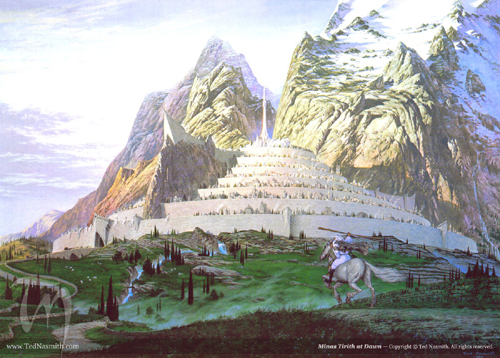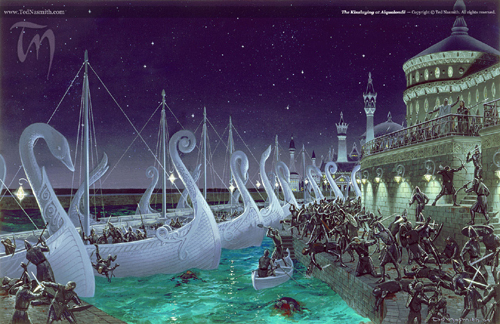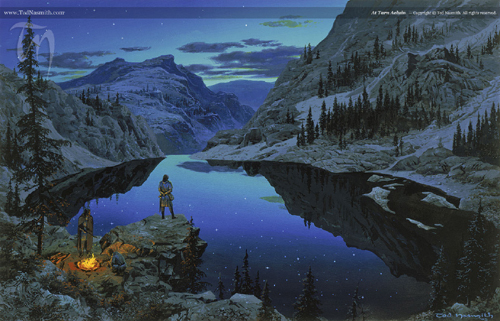Revised and expanded to include twenty-six breathtaking new full-color paintings (forty-eight paintings in all) by renowned Tolkien artist Ted Nasmith, Houghton Mifflin's new illustrated edition of The Silmarillion is a stunning rendition of this magnificent but underappreciated epic.
The Silmarillion tells the oldest tales of Middle-earth: of its creation and of the ancient histories of the Elves and the coming of Men into the world. It also chronicles the early battles between good and evil that foreshadow the great conflict in The Lord of the Rings.
The tales of The Silmarillion were the underlying inspiration and source of J.R.R. Tolkien's imaginative writing; he worked on the book throughout his life but never brought it to a final form (it was published posthumously in 1977 to international acclaim). Long preceding in its origins The Lord of the Rings, it is the story of the First Age of Tolkien's world, the ancient drama to which characters in The Lord of the Rings look back and in which some of them, such as Elrond and Galadriel, took part.
The title Silmarillion is shortened from Quenta Silmarillion, "The History of the Silmarils," the three great jewels created by Feanor, most gifted of the Elves, in which he imprisoned the light of the Two Trees that illumined Valinor, the land of the gods. When Morgoth, the first Dark Lord, destroyed the Trees, that light lived on only in the Silmarils; Morgoth seized them and set them in his crown, guarded in the impenetrable fortress of Angband in the north of Middle-earth. The Silmarillion is the history of the rebellion of Feanor and his people against the gods, their exile in Middle-earth, and their war, hopeless despite all the heroisim of Elves and Men, against the great Enemy.
The book includes several other, shorter works beside The Silmarillion proper. Preceding it are "Ainulindale," the myth of Creation, and "Valaquenta," in which the nature and powers of each of the gods is set forth. After The Silmarillion is "Akallabeth," the story of the downfall of the great island kingdom of Numenor at the end of the Second Age; completing the volume is "Of the Rings of Power and the Third Age," in which the events of The Lord of the Rings are treated in the manner of The Silmarillion.
With Christopher Tolkien's close collaboration, The Silmarillion has now been completely reset, using the revised and corrected text of the second edition. By way of introduction, it also includes a letter written by J.R.R. Tolkien in 1951, which provides a brilliant exposition of his conception of the earlier Ages. This edition also includes a map of Beleriand which is attached to the back endpapers.



Did you find this review helpful?